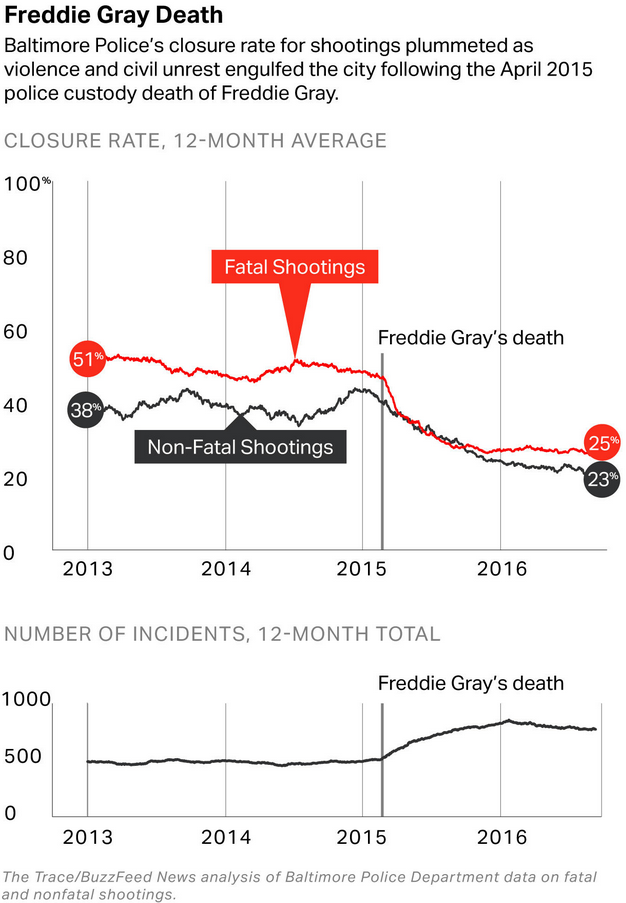Unsolved Shootings are Rising
 In 2015, I documented that crime in Baltimore was rising rapidly as police resources became stretched as they dealt with riots and anger following the death of Freddie Gray. I warned that the city could tip into a permanently higher crime rate.
In 2015, I documented that crime in Baltimore was rising rapidly as police resources became stretched as they dealt with riots and anger following the death of Freddie Gray. I warned that the city could tip into a permanently higher crime rate.
It’s now become clear that is exactly what happened as an investigative report by The Trace reveals:
Instead of getting backup, detectives were pulled from their cases, sometimes for days at a time, to help quell the violence. By 2016, homicide investigators cumulatively spent 10,000 hours working riot duty and patrol rather than tracking down murderers…
In the ensuing months, Baltimore’s closure rate for shootings dropped to 25 percent, the lowest in recent history. More than 1,100 cases from 2015 and 2016 alone remained unsolved by the following summer.
As the closure rate fell, the number of shootings increased (see data at right).
It’s not just Baltimore, however:
The crisis of unsolved shootings isn’t confined to cash-strapped cities like Baltimore, but also hits some of America’s most affluent metropolises. In 2016, Los Angeles made arrests for just 17 percent of gun assaults, and Chicago for less than 12 percent. The same year, San Francisco managed to make arrests in just 15 percent of the city’s nonfatal shootings. In Boston, the figure was just 10 percent.
Crime is lower today than in the past but we are in danger of becoming complacent. The rate of unsolved crimes is very high and in some cities it is soaring. Any city with an arrest rate for assaults of 15% is primed for a crime wave.
We need more police as well as better policing.
Addendum: I wonder how many of these cities are still devoting significant resources to marijuana busts?